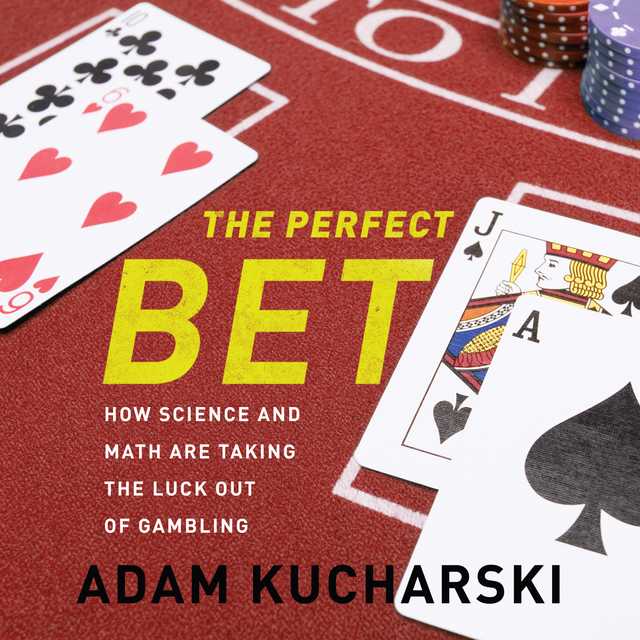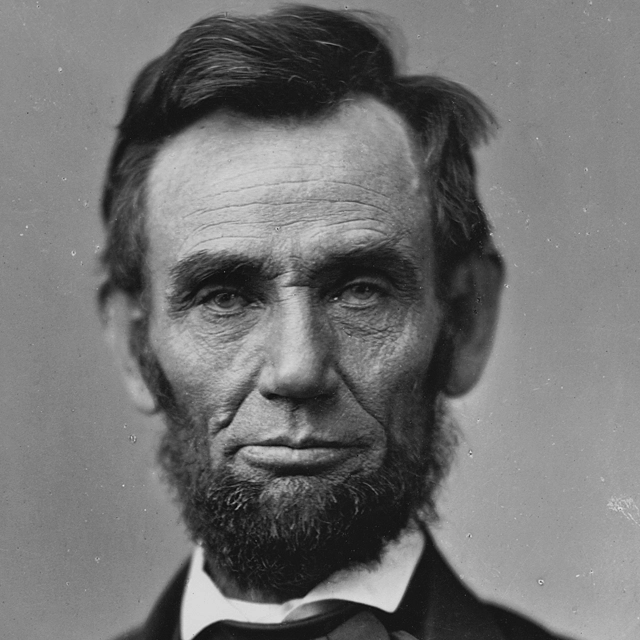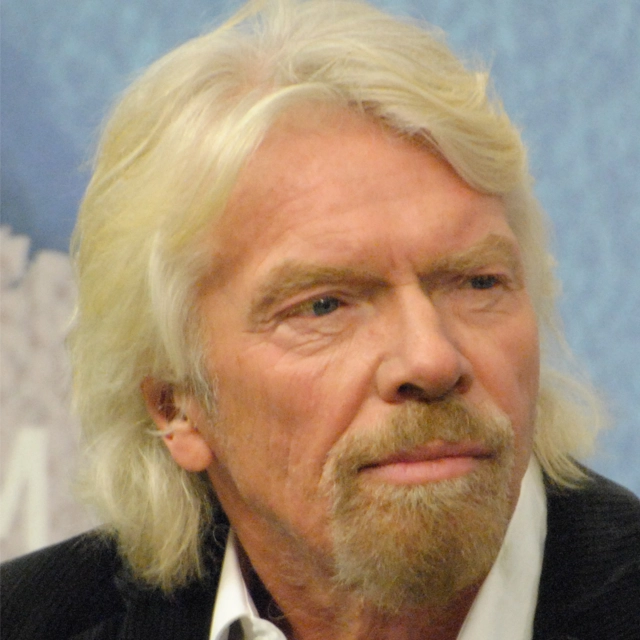Recommended by 1 experts
The E-Myth Revisited Audiobook Summary
In this compact disc edition of the totally revised underground bestseller — The E-Myth, Michael Gerber dispels the myths surrounding starting your own business and shows how commonplace assumptions can get in the way of running a business. He walks you through the steps in the life of a business — from entrepreneurial infancy, through adolescent growing pains, to the mature entrepreneurial perspective, the guiding light of all businesses that succeed — and shows how to apply the lessons of franchising to any business, whether or not it is a franchise. Finally, Gerber draws the vital, often overlooked distinction between working on your business and working in your business. After you have listened to The E-Myth Revisited, you will truly be able to grow your business in a predictable and productive way.
Other Top Audiobooks
The E-Myth Revisited Audiobook Narrator
Michael E. Gerber is the narrator of The E-Myth Revisited audiobook that was written by Michael E. Gerber
Michael E. Gerber is a true legend of entrepreneurship. The editors of INC magazine called him ”The World’s #1 Small Business Guru.” He is Co-founder and Chairman of the Michael E. Gerber Companies–a group of highly unique enterprises dedicated to creating world-class start-ups and entrepreneurs in every industry and economy. The Gerber Companies transforms the way small business owners grow their enterprises and has evolved into an empire over its history of nearly three decades.
About the Author(s) of The E-Myth Revisited
Michael E. Gerber is the author of The E-Myth Revisited
More From the Same
- Publisher : HarperAudio
- Abraham
- American Gods [TV Tie-In]
- Dead Ringer
- House of Sand and Fog
- Prey
The E-Myth Revisited Full Details
| Narrator | Michael E. Gerber |
| Length | 8 hours 5 minutes |
| Author | Michael E. Gerber |
| Category | |
| Publisher | HarperAudio |
| Release date | March 29, 2005 |
| ISBN | 9780060839246 |
Subjects
The publisher of the The E-Myth Revisited is HarperAudio. includes the following subjects: The BISAC Subject Code is Business & Economics, Small Business
Additional info
The publisher of the The E-Myth Revisited is HarperAudio. The imprint is HarperAudio. It is supplied by HarperAudio. The ISBN-13 is 9780060839246.
Global Availability
This book is only available in the United States.
The E-Myth Revisited is recommended by
Dave Ramsey
David Lawrence Ramsey III is a personal finance personality, radio show host, author,& businessman.
Recommends this book
Goodreads Reviews
Farnoosh
April 17, 2016
It felt like overnight MBA school. Or better. A 5-star through and through. I never got my MBA. I've build a 6-figure business after resigning from my long corporate career, and I'm never going to go for the MBA, but listening to Michael Gerber's E-Myth Revisited book, I feel like I just went to overnight MBA School.I listened to the book at 1.5x the speed over several flights and learned SO MUCH and I feel that even if you are a pro small business owner, you'll get a lot out of this book.This is among my top 5 business books mainly because of the highlights below:1. A lot of story and entertaining especially with Michael's entertaining, brilliantly paced narration.2. The stories he tells are unforgettable - they make a great business point - and hilarious. i.e.) the fat guy vs the skinny guy in your head, the barber story, the technician, manager and entrepreneur battling it out, Sarah - the case study - hiring Harry and the downfall of that relationships and so on.3. You learn so much about creating fool proof systems that would work without depending on who bought the business (if it's a franchisee). Gerber argues that if you have a prototype, such as The Franchise Prototype, then you have a system that makes your business work!4. You get inspired, motivated, and learned how to run a small business in such a way that you can still love your life, love your work, make money and not be owned by it all.5. This book was not your typical dry, boring, stiff business book, thank God! It spoke from a place of passion, soul, and true enthusiasm and yet it had tons of pragmatism in it.6. Gerber's personal story, which he shares with openness and vulnerability. I loved it.7. And pay attention to where he shares the main reason we fail in small business: It's that we bring our chaos into the business, so that we end up creating the worst job in the world, because we refuse to change!!!!Some of my most favorite quotes from the book - and there were so many:"The purpose of going into business is to get free of a job so you can create jobs for other people. The purpose of going into business is to expand beyond your current horizons so you can satisfy a need in the marketplace that has never been satisfied before, so you can live an expanded stimulating new life.""Don't go working on the commodity, work on the business.""We must ask: How must the business work for it to be a great business, to match our vision, to give us the lifestyle we dream?""In the business format franchise, the hamburger wasn't the product, McDonald's was!""How do you build s business that works effortlessly and predictably so that you can build the life you love? How do you get free of your business to live a fuller life? Your business cannot control you. You control it.""Working ON your business, not IN it.""The primary purpose of your life is NOT to serve your business. The purpose of your business is to serve your life.""How can I run my business doing the work I Love to do rather than the work I Have to do?""Business, even a small business such as yours, is both an art and a science. And you need a process, a practice, a method and a system that works. ""Practice the craft until the jewel appears one day. It is the work raised to near perfection that connects the crafts person to her art. Do it until the jewel appears when mastery is achieved.""Life is what this business is about! Let business be your personal transformation.""Great people create their lives actively while everyone else is waiting passively to see where their life takes them. Difference is living fully and intentionally or just existing.""Keep the curtain UP at all costs, to be open, to be awake, to give up false beliefs.""It's not your business you have to fear losing. It's yourself. It's you you're trying to find on the other side.""The product is what your customer feels about your business, the experience of doing business with you.""Selling is not closing. Selling is opening by going thru the questionnaire process and finding out what all you can offer him or her."My biggest takeaway: "The entrepreneurial dream is a yearning for structure, for form, for control, an escape from chaos, and for something else as well: a yearning for a relationship between ourselves and the world in a way that is impossible to experience in a job!" Now he speaks my language. Hope you found this review inspiring enough to go read the book NOW!
Wellington
January 28, 2008
This is a fine book showing some of the flaws of small businesses and why so many fail. The author uses a fictional small business owner who started a pie shop and running herself ragged. She has a great gift in making pies but is burning herself out. She was thinking about how she her job was making and selling pies when her business could and should be so much more.Successful companies don’t actually sell the products that they make. They fulfill an emotional need of their clients. For instance, Southwest Airlines is not selling airline tickets but a fun way to travel. Disney is not selling you a Mickey Mouse hat but to experience having the innocence of child again. Harley-Davidson is not selling you a motorcycle – but a membership to a rebellious, unbridled culture.My mind went racing while I thought of the four or five companies on my mind.This book finally made some sense about why someone would write a book telling the world their secrets. The author possibly has hit a ceiling on the amount of time he can invest – the amount of money he can make. The only way he could make more money is to leverage himself in making CD’s, doing lectures, and yes, writing books.The third major point this book made was about systems. I really dislike systems in the workplace because they dehumanize the person. However, the author made some of the best arguments against this notion. I’m forced to rethink my ideas on this subject.But if you are a small business owner or are looking to become one, you really have to read this.
Sophie
February 16, 2016
The The E-Myth Revisited deals with two major misconceptions about running a business: that every small business owner is an entrepreneur and the assumption that working on your business is the same as working in your business. This book is an absolute must-read for business owners and while on occasion the writing is a little cheesy there are plenty of really important topics discussed in a clear, informative manner, which will help you grow your business in a productive and successful way.
Chris
November 04, 2018
I skimmed this book five years ago after hearing about it from some North Point staff members. I thought I understood the basic ideas, so for the last five years the book sat on my shelf. Until this week. I had a chance to listen to the book this week, and will likely add it as required reading for all our new staff members.Great lessons:1) Most people get into business (ministry?) because they like doing something and wish they could do it for themselves. Naively, they think they'll have more flexibility or earn more of the profit. Seldom do they consider the start-up costs, the risk and the need for discipline or systems. These people, says the author, are technicians. They have a technical skill, e.g., baking pies (preaching) but lack either the management tools or the margin to initiate improvements and grow the business.2) As a result, most--up to 80%--of new business start-ups fail, and fail miserably. 3) Enter systems. Systems allow one to scale and automate and refine in a way that a single individual often cannot. Imagine, says the author, designing a business model that can be replicated 5000 times! Engineer as much of the operations as possible to be fool-proof. Break down the components into small pieces that can be managed by someone with very little innate ability and/or training. 4) Be cautious of talent. Too often, hiring "talented" managers can screw up the system because they begin to turn dials and make changes. It may seem counter-intuitive, but these self-starters can really cause big problems quickly. They have a role, but it's in the R&D department, not on the execution side. 5) Turn training into a game. Make it fun for new staff to learn what is expected. 6) Measure everything . . . so you can diagnose more efficiently. 7) Script everything . . . so you can more easily achieve consistent/predictable results, and maintain the agreed-to standard.8) Check-lists are common-sense necessary for anything you plan to do at least twice. Get over the feeling these are for idiots; they ensure that they right things are done in the right order. 9) There are sales techniques (scripts) that work. Period.10) This is a book I'll probably add to my "Every January" list for the next few years alongside Acts, The Effective Executive, Getting Things Done, The Art of War, etc.
Mario
January 23, 2015
This book is an absolute MUST READ for anyone looking to start or manage a business. It's evergreen wisdom that will give you a nice foundation how to plan your business and the proper way to manage it. Even if you don't wanna start your own company this book will definitely help you understand more about business in general and how the structure of a stable company works. This is a really valuable book full of wisdom, don't miss out!
Leah
October 23, 2021
Wow I've wanted to read this for 5 years lol It was only until __ brought it to my priority to reads list that I made it happen.I feel like I can apply these lessons I learned from this book to my small business - to an extent. I didn't really need to read near the end where he talks about HR and dealing with your team because it isn't really necessary being a youtube vlogger :P But good knowledge all round.I like the beginning where he talks about how every new business owner wears three hats - the technician, the manager, and the entrepreneur. And that all three of these bosses are constantly fighting inside of you and you have to give them equally as much as attention as the other to maintain a healthy balance in your business. It's just as important to do the work as it is to manage and dream about it's future. Then he goes on into a lot of what I've learned in business school which is have a main purpose, hire the right people, etc etc.
Avolyn
February 27, 2021
This book has held up better than you'd expect. I read this not as someone who plans on becoming an entrepreneur but someone who just likes a good business book that can challenge my old modes of thinking.That being said, it reads a little cheesy at times like it's written as a fable. And some of the advice truly is outdated. At one point Gerber cites the statistics on making a sale when human touch is involved and therefore you should make a point to have a small moment of contact or touch with every customer. ABSOLUTELY DO NOT DO THIS. And in the section on color and the psychology of color in marketing he spends so long talking about how IBM knew what they were doing when they chose their shade of blue and all the research on blue, which I don't think is wrong, but then went on to talk about how disastrous it would have been if they'd gone with orange. Well in 2021 we are all aware of Amazon and orange doesn't seem to have hurt them one bit. AWS, honey. Look it up.
Robert
September 21, 2012
"A life laking in comprehensive structure is an aimless wreck. The absence of structure breads breakdown" - Quote from The Third Wave, Alvin Toffler. So Mr. Gerber makes the point that in a broken world our businesses need to be the shelter from the chaos with what Mr. Gerber calls "Impeccable order".“The difference between great people and everyone else is that great people create their lives actively, while everyone else is created by their lives, passively waiting to see where life takes them next." - Michael E. Gerber.
Sher❤ The Fabulous BookLover
September 15, 2019
3.5 Stars Very repetitive, but it has some good concepts to think about.
Melissa Jill
May 14, 2010
This book is one of the most highly acclaimed reads for small business owners. I started listening to it on CD a few years ago and then got distracted and just finished it recently. I got the gist of the message a few years back and it truly shaped my business and focus from that point forward.The E-Myth (Entrepreneurial Myth) is that businesses are started by entrepreneurs seeking profit. In actuality, businesses are started by technicians (employees) who convince themselves that they could be their own boss and work for themselves. They make the assumption that by understanding the technical work of a business, they also understand the business that does that technical work.Like many photographers, I started my own business because I like photography. And like most photographers who own their own business, I did everything myself to start out with. I did the book-keeping, the shooting, the editing, the product production, sales, marketing, graphic design, and networking. I wore every hat and very quickly realized I would burn myself right out if I continued on this path. The author states that there are 3 different roles that need to be covered in order for a small business to succeed: the technician, the manager and the entrepreneur. Most everyone who starts a small business does so because they like the technician work -- in my case taking and processing photos. But if they continue to cling to that role the business will ultimately, and fairly quickly, fail. They must be a manager and even more importantly, an entrepreneur -- having a vision and thinking about the big picture of where they want their business to go. But they won't be freed up to be a manager or entrepreneur if they are overwhelmed with the technical work of the business. They need to take on employees or outsource the work of the business in order to grow. I talk to so many photographers who are just starting out and I hear the same thing over and over again. They are spending all their time behind the computer editing and know they need to focus on other areas of their businesses but they just don't have the time. In order to get over this hump and have a chance to succeed, they need to let go of part of the technician in themselves and embrace the manager and entrepreneur.Once a business grows and has more employees handling various roles in the business it is of utmost importance to systematize. Everything you do should be a system that can be duplicated. You will be far more efficient and profitable if you systematize, systematize, systematize. Design your business as if you were going to try to make 2000 others just like it. Then you will be able to easily train others to do much of the work IN the business so that you can focus on working ON the business. I have dedicated myself to the process of systematizing everything we do at Melissa Jill Photography for the past few years. A ton of work has gone into developing our workflow and systems manual. I can definitely see how this hard work has paid off.If you haven't yet read this book and you are a small business owner -- get on it! You will be happy you did.
Patrick
February 17, 2018
I am a small business owner, or at least I thought I was before I read this book, but now I realise I'm not. Yes, I'm a self-employed English language teacher in Japan, but what I have isn't a business so much as a job. The crucial difference being what happens if you stop pedalling. If I did, the bike would quickly grind to a halt and topple over. That means I have a job. A business on the other hand is an institution (even a small one) that could be run by someone else. The real difference, as Gerber explains, is the system. With a system (think game plan, plot structure, lesson plan) you are free to approach your business from a different perspective. And that perspective is to treat your business as a prototype, a testing ground where you keep innovating, measuring results and standardising successful practices until you have built a system that works. Divide what work needs to be done into categories (like doing the accounts, the marketing, making the widgets) and decide who is responsible for each job. The jobs might all fall on your own shoulders at first but that's OK, at least you are approaching the work as a business and at some point you could hire people into the different jobs and give them a manual (you have a system now, remember?). The aim is to free yourself of having to do the menial tasks and be able to focus on the future of the business. Easy right? In theory. And this is where Gerber excels. Approaching work as a system means you are free to make mistakes, free to experiment and free to develop what you have into something really great. I'm on board. The only downside to Gerber's book is the rather artificial case study, Sarah and her pie shop, that keeps popping up at the end of every chapter. I get that Gerber needed an example to demonstrate his points, but by the end of the book I was eager for Sarah to be bitten by a zombie or vampire and turn the pie machine onto her mentor and then, we'd see how robust a system Gerber really has. Still, his insights from a book written before internet business had really dawned are invaluable. In the category of must read for entrepreneurs and would-be conquerors of the known business world.Download my starter library for free here - http://eepurl.com/bFkt0X - and receive my monthly newsletter with book recommendations galore for the Japanophile/crime fiction/English teacher in all of us.
Daniel
June 06, 2015
Self-employment does not make you an entrepreneur.In this classic, Gerber highlights the three functions in a business: the Entrepreneur, the Manager, and the Technician. Self-employed people stay on the Technician-level and thus limit themselves.He then moves onto the three stages of business growth, Infancy, Adolescence, and Maturity and shows how the role of the functions change as you grow.Finally he outlines a Business Development Program, a practical Turn-Key system for putting his ideas into action.I'm looking forward to putting these ideas to work in my business, Targeted Resumes, over the coming weeks and months.If you got into business because you wanted freedom, then study this book and make its ideas happen in your business.
Alex
February 22, 2015
Hands down the best book on business I've read yet. You often hear the same generic motivational narrative and watered down advice over and over. This book was the complete opposite - it shows you the core of what a business really is and gives you practical advice on starting a successful one. A must read for anyone into entrepreneurship, and even if you aren't it'll give you invaluable advice on how to use systems to achieve results in your every day life.
Yevgeniy
March 20, 2021
There is some really good content buried in this book... But to find it, you'll have to wade through some sappy, cheesy, self-congratulatory dialogs with an imaginary owner of a new bakery business, plus a number of pseudo-philosophical nonsense rants on the beauty of life and business. Also, as you get deeper into the book, each chapter contains less and less valuable content, but more and more sloppy pitches for the author's consulting company; by the time you get to the marketing chapter, it's basically a few pages of filler, followed by "At Michael E Gerber Companies, we can help you with marketing..." Bleh.That said, there really is some good stuff here, so as long as you're good at skimming past the BS, it's a worthwhile read for any entrepreneur. Here are some of my favorite insights:(1) "Everybody who goes into business is actually three-people-in-one: The Entrepreneur, The Manager, and the Technician." Many people who start businesses are Technicians: they are experts at doing the technical work of a business and they figure they can create a company around those skills. But, as it turns out, the "technical work of a business and a business that does technical work are two totally different things!" To succeed as a business owner, you'll need not only the skills of a Technician, but also the skills of an Entrepreneur and a Manager.(2) One of the key differences between the Technician and the Entrepreneur is what they build as a product. To the Technician, the product is whatever the company delivers and sells to a customer (i.e., the widgets). But to the Entrepreneur, the business itself is the product. Whereas the Technician works in the business, the Entrepreneur works on the business. And if you don't have the latter, you can't succeed, no matter how good you are at the former.(3) "The true product of a business is the business itself." I think this is the most important insight in this entire book: to think of the business itself as a product, as a machine that can consistently and repeatedly produce a certain result. And that machine should work without you, or any specific individual involved. The book pitches this as a "franchise" concept—where you create a reusable blueprint for your business, so you can stamp out franchises all over the place—but even if you don't plan on actually franchising anything, to be successful, you still need to build your business in exactly this way. "What Ray Kroc understood at McDonald's was that the hamburger wasn't his product. McDonald's was." (4) The key insight of this book is more or less the same insight as in the book Built to Sell: you should build your business as if you were going to sell it to someone, even if you have no plans to sell it whatsoever. And a business that's optimized for selling is just like a business that's optimized for franchising: it's a machine, a repeatable process, one that can be executed by anyone, and not just you (since you won't be involved after selling!). "Forced to create a business that worked in order to sell it, he also created a business that would work once it's sold, no matter who bought it. Armed with that realization, he set about the task of creating a foolproof, predictable business. A systems-dependent business, not a people-dependent business. A business that could work without him. Unlike most small business owners before him—and since—Ray Kroc went to work on his business, not in it. He began to think about his business like an engineer working on a pre-production prototype of a mass-produceable product."(5) One of the keys to building a "franchise" (even if you don't plan on franchising) is to find a way to build a business that is systems-dependent rather than people-dependent. That is, your business should be able to deliver results to the customer, not based on hiring employees who are world's greatest experts and can therefore do extraordinary things to get those results—experts are rare and expensive, and their performance fluctuates (e.g., depending on mood or motivation), so it's hard to scale a business around them—but based on having the right system in place that allows regular employees to consistently get those same results."It is literally impossible to produce a consistent result in a business that depends on extraordinary people. No business can do it for long. And no extraordinary business tries to! Because every extraordinary business knows that when you intentionally build your business around the skills of ordinary people, you will be forced to ask the difficult questions about how to produce a result without the extraordinary ones. You will be forced to find a system that leverages your ordinary people to the point where they can produce extraordinary results over and over again."(6) The book defines a Business Development Program, which is a step by step guide for how to systematize every aspect of your business. It consists of 7 steps:1. Your Primary Aim2. Your Strategic Objective3. Your Organizational Strategy4. Your Management Strategy5. Your People Strategy6. Your Marketing Strategy7. Your Systems StrategyAs the book gets further along, the content gets thinner and thinner, so I'll only touch on a few of these below.(7) Primary Aim: imagine you're dead. Now, imagine people are attending your funeral, and someone is saying a eulogy for you. What would you want them to say about your life? What's the story they would tell? That's the Primary Aim. I found this a very powerful way to think of what I want to do with my life (and not just business)!(8) Strategic Objective: What product you create and what you sell might are not the same thing! That is, what your customer walks out of the store with, and what the customer feels they've bought are typically very different:"Charles Revson, the founder of Revlon and an extraordinarily successful entrepreneur, once said about his company: 'In the factory Revlon manufactures cosmetics, but in the store Revlon sells hope.'"The reality is that most companies aren't selling products, but emotions and other intangibles: they are selling hope, time, peace of mind, power, love, etc. Knowing what you're really selling is critical to building a successful business.(9) Organizational Strategy: "Most companies organize around personalities rather than around functions. That is, around people rather than accountabilities and responsibilities. The result is almost always chaos." One of the really powerful ideas in this book is that, right when you start your company, before there are any employees, you create an org chart for what the company will look like in the future. Within this org chart, you define every role, every title, and every responsibility. In the early days, the co-founders fulfill all these roles. Your goal is to try these roles out, figure out how to make each one work, record and systematize the process, and then hire other people to fill these roles, following your system, while you move up to managing them. Rinse and repeat until the whole org chart is filled out by others, and they are following the system you've created for them.(10) People strategy. Once you have a system in place, the idea is to present it to new hires, on day one, a bit like introducing them to the rules of a game. "There is nothing more exciting than a well-conceived game. That is what the very best businesses represent to the people who create them: a game to be played in which the rules symbolize the idea you, the owner, have about the world. If your idea is a positive one, your business will reflect that optimism. If your idea is a negative one, your business will reflect that as well. In this context, the degree to which your people 'do what you want' is the degree to which they buy into your game."
Laney
August 22, 2022
While I do agree with other reviewers that the style of writing in this book is extremely cheesy, i have to admit that the advice contained here was absolutely invaluable to me. I was given a practical roadmap for the next steps in growing my business, and also a renewed enthusiasm for the work that I’m doing.
Bartosz
February 08, 2017
Must read for every enterpreneur. Instant classic
Most Popular Audiobooks
Frequently asked questions
Listening to audiobooks not only easy, it is also very convenient. You can listen to audiobooks on almost every device. From your laptop to your smart phone or even a smart speaker like Apple HomePod or even Alexa. Here’s how you can get started listening to audiobooks.
- 1. Download your favorite audiobook app such as Speechify.
- 2. Sign up for an account.
- 3. Browse the library for the best audiobooks and select the first one for free
- 4. Download the audiobook file to your device
- 5. Open the Speechify audiobook app and select the audiobook you want to listen to.
- 6. Adjust the playback speed and other settings to your preference.
- 7. Press play and enjoy!
While you can listen to the bestsellers on almost any device, and preferences may vary, generally smart phones are offer the most convenience factor. You could be working out, grocery shopping, or even watching your dog in the dog park on a Saturday morning.
However, most audiobook apps work across multiple devices so you can pick up that riveting new Stephen King book you started at the dog park, back on your laptop when you get back home.
Speechify is one of the best apps for audiobooks. The pricing structure is the most competitive in the market and the app is easy to use. It features the best sellers and award winning authors. Listen to your favorite books or discover new ones and listen to real voice actors read to you. Getting started is easy, the first book is free.
Research showcasing the brain health benefits of reading on a regular basis is wide-ranging and undeniable. However, research comparing the benefits of reading vs listening is much more sparse. According to professor of psychology and author Dr. Kristen Willeumier, though, there is good reason to believe that the reading experience provided by audiobooks offers many of the same brain benefits as reading a physical book.
Audiobooks are recordings of books that are read aloud by a professional voice actor. The recordings are typically available for purchase and download in digital formats such as MP3, WMA, or AAC. They can also be streamed from online services like Speechify, Audible, AppleBooks, or Spotify.
You simply download the app onto your smart phone, create your account, and in Speechify, you can choose your first book, from our vast library of best-sellers and classics, to read for free.
Audiobooks, like real books can add up over time. Here’s where you can listen to audiobooks for free. Speechify let’s you read your first best seller for free. Apart from that, we have a vast selection of free audiobooks that you can enjoy. Get the same rich experience no matter if the book was free or not.
It depends. Yes, there are free audiobooks and paid audiobooks. Speechify offers a blend of both!
It varies. The easiest way depends on a few things. The app and service you use, which device, and platform. Speechify is the easiest way to listen to audiobooks. Downloading the app is quick. It is not a large app and does not eat up space on your iPhone or Android device.
Listening to audiobooks on your smart phone, with Speechify, is the easiest way to listen to audiobooks.































